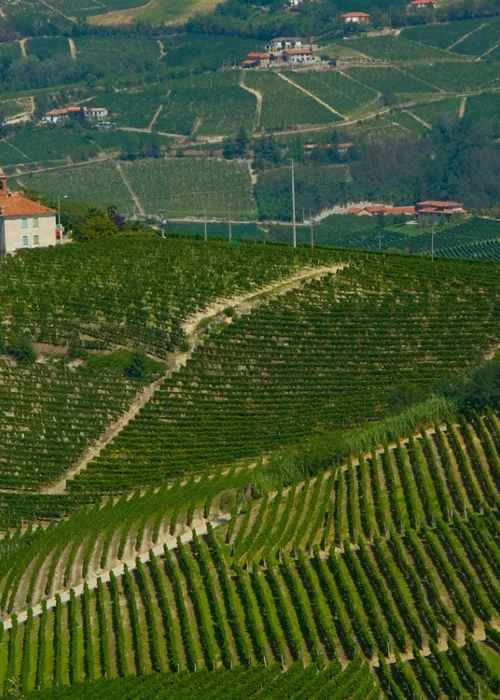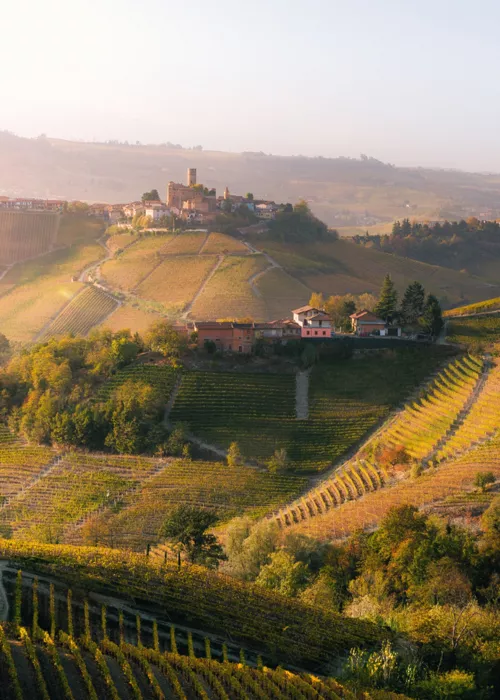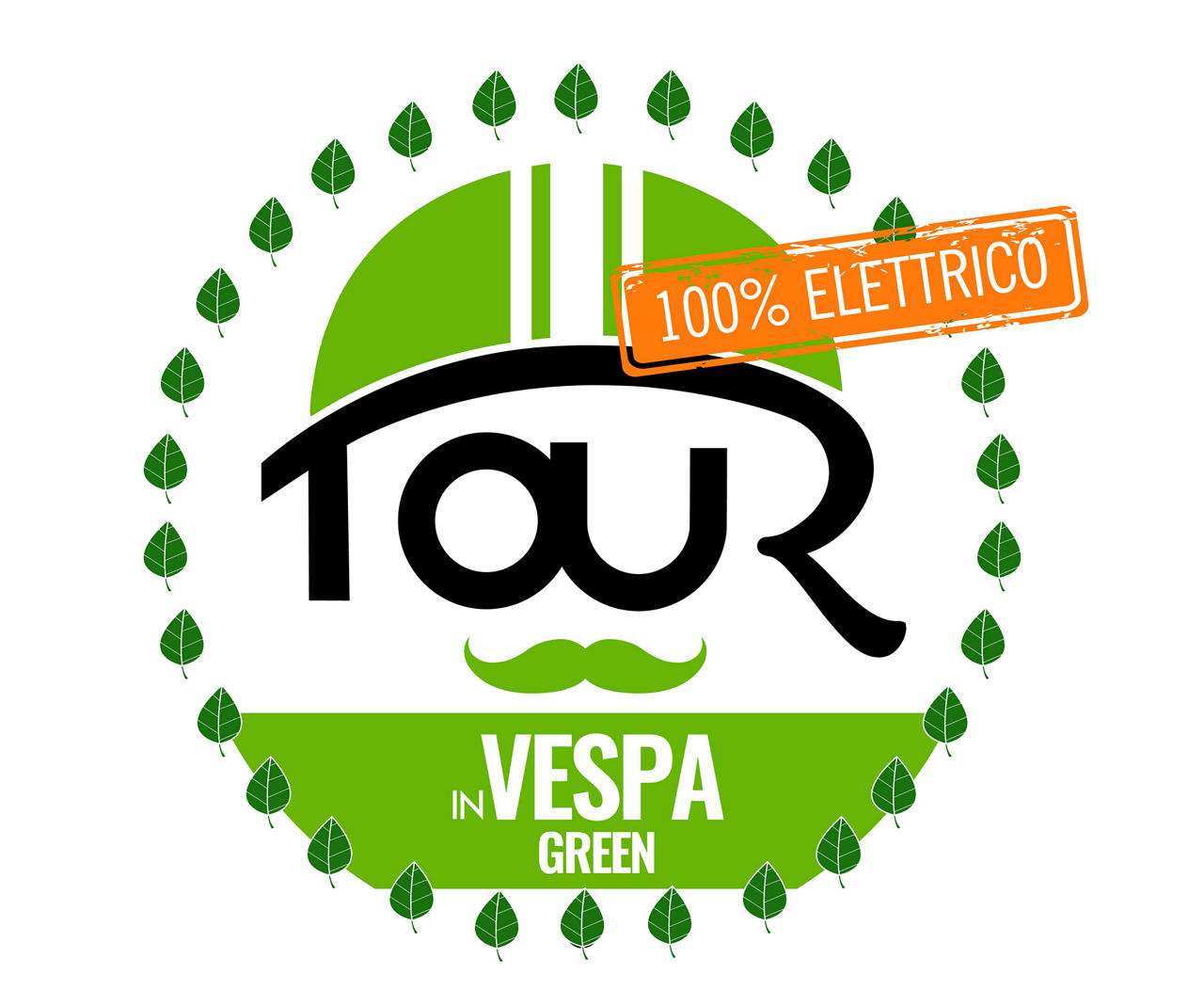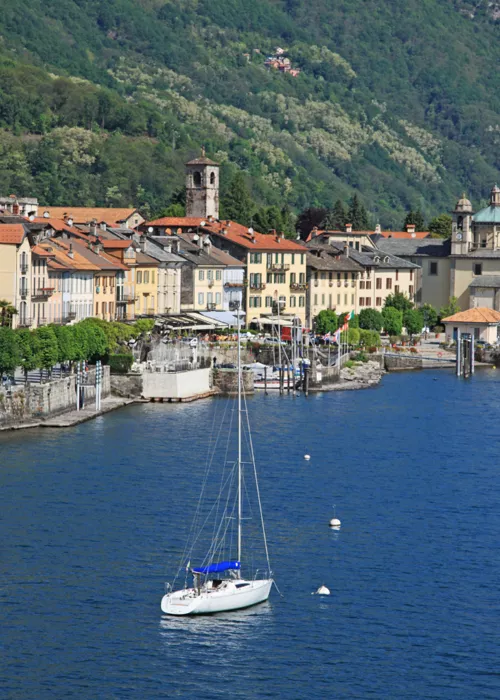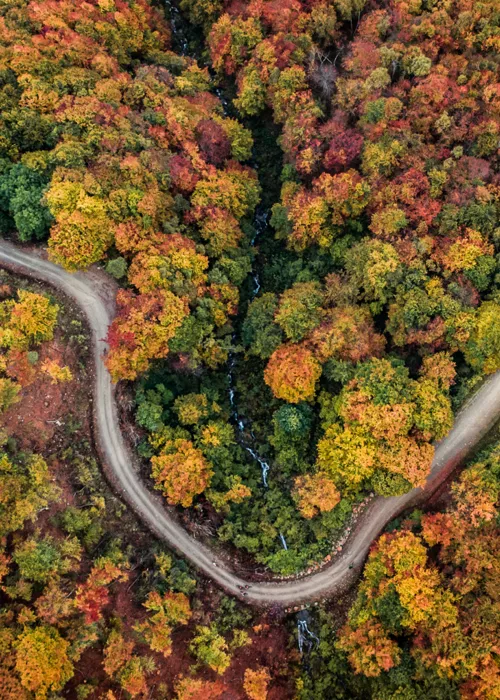Bergolo

The itinerary starts at Bergolo, the smallest municipality in the Langhe and one of Italy's smallest Orange Flag towns (destinations certified by the Italian Touring Club). Bergolo is also known as the "stone village" because of the dozens of outdoor sculptures and artworks to be seen there. It might be small, but it's certainly very lively, especially in summer when there's an abundance of food and wine festivals dedicated to the two signature products of the Langhe: hazelnuts and the local sheep's-milk cheese known as "tuma". The town's landmark for food and hospitality is the restaurant and hotel ‘L 'Bunet, whose refined menu is based on seasonal produce and carefully-sourced ingredients. At a short distance from Bergolo, in Torre Bormida, you'll find the agritourism estate of La Costa, set in large gardens dotted with hazelnut trees. The estate also has its own swimming pool. Thanks to the orchards and a small livestock farm, the restaurant is supplied with homemade jams, meat and charcuterie.
Cortemilia

Between woodland and hazelnut groves you then come to Cortemilia, one of the main towns in Upper Langa. The centre of the town is medieval in origin, with its arcades and picturesque houses. This is the undisputed capital of the "Tonda Gentile delle Langhe", a hazelnut with a rounded shape, a fruity, fragrant aroma and a distinctively intense yet delicate flavour; an essential ingredient in many cakes and desserts, it also pairs beautifully with roast meat, homemade pastas, cheese and ham. Obviously it's no coincidence that Cortemilia is also the venue for the traditional National Hazelnut Festival. Among the local specialities, try the inimitable hazelnut cake from the Corte di Canobbio, a long-established confectioner's shop (established in 1964) that now also has a beautifully-kept B&B. Another place to buy locally-grown hazelnuts is Cascina Barroero. One of the local signature destinations is Villa San Carlo, where the chef Carlo Zarri, an ambassador for the foodie culture of the Langhe, serves up a menu based on ingredients sourced from small local producers. In the historic town centre, another place to visit is Bar Enoteca Bruna where you can discover some wonderful labels from Piedmont and beyond, thanks to the wide selection of wines (also served by the glass) and the finest charcuterie and cheeses including Robiola di Roccaverano. Not far from the village, Gallo is a virtuous example of a sustainable agritourism, as the menu is based almost entirely on veg, meat and pasta made on the farm's own estate.
Cravanzana

From Castino, you simply must visit the town of Cravanzana, a foodie destination famous for the restaurant and hotel Da Maurizio, which opened in 1902. It's known for specialities such as Alba-style meat, tajarin (a Piedmontese variety of tagliolini pasta) with ragù or porcini mushrooms, chicken cacciatore and wild boar with Barolo. As you'd expect, the wine offering is equally good. Not far from the village, peace, quiet and panoramic views are all assured at the family-run agritourism La Collina degli Scoiattoli. On the 25 hectares of the estate, the hazelnut farmers Nocciole d'Elite carefully sort and categorise the nuts to obtain the perfect product. The hazelnuts, raw or roasted, are then made into dough, grains or flour. A place to relax surrounded by nature is Cascina Prato, an agritourism with its own farm and a restaurant where you can rediscover the old Piedmontese recipes and the art of home baking
Santo Stefano Belbo and the Moscato d'Asti hills

Along the descent to Santo Stefano Belbo we find the part of the Langa region that's famous for wine and the hills covered with rows of Moscato d'Asti vineyards. Here, the aromas of Moscato Bianco acquire particular finesse and great intensity, creating wines capable of evolving over time.
Alessandro Boido, with his winery Ca’ D’ Gal, is undoubtedly the man who first successfully learned the art of refining the Moscato d'Asti grape. The agritourism attached to the wine cellar also offers accommodation as well as the chance to sample the excellent local cuisine and homegrown wines. Excellent quality and innovation are also hallmarks of Riccardo Bianco and his winery, Mongioia. His was the first Moscato d'Asti “Canelli” to be produced in a specially designed amphora. A similar winery is I Vignaioli di Santo Stefano, founded in 1976 with the aim of establishing Moscato d'Asti as an alternative to industrially-produced wines. There are also many family-run businesses, where the new generations of winegrowers are producing sparkling wines within the Alta Langa appellation. Among them are Paolo and Ilaria Grimaldi with their winery Fratelli Grimaldi. And if dessert is the best pairing for sweet wines, we should mention the many local confectioners, of whom the best-known is perhaps Pasticceria Dogliotti. Nearby, there are two delightful eateries to stop for lunch or dinner based on typical cuisine: La Bossolasca and Eno Agriturismo Gallina Giacinto.
As the easternmost town in the province of Cuneo, Santo Stefano Belbo is inextricably linked to the writer Cesare Pavese, whose birthplace is open to visitors. From the old town there are three hilly paths winding through the green vineyards and woods: the Gaminella, the Salto and the Mari del Sud.
A well-established local eatery is the Stazione restaurant, where the seasonal menus are based on locally-sourced ingredients including the must-try white Alba truffle (and an excellent wine list!) Another foodie stop is the Ape Wine Bar, a wine bar and restaurant serving an excellent selection of wines and dishes in just the right format, including the half-portion. On the hill towards Valdivilla, a great place to stay is the Relais San Maurizio which offers guests a luxury stay in a former monastery; the restaurant Guido da Costigliole, in the monastery's ancient cellars, serves excellent food in a warm and inviting atmosphere. You can enjoy the very same atmosphere in summer, on the splendid terrace overlooking the kitchen and the Langhe hills as far as the Alps. Where Santo Stefano ends, Canelli begins: the two towns share the glories of Moscato wine and are often mentioned together. This is the home of one of the region's best-known restaurants, San Marco, where the menu is a celebration of the rich food and wine heritage of this area.



